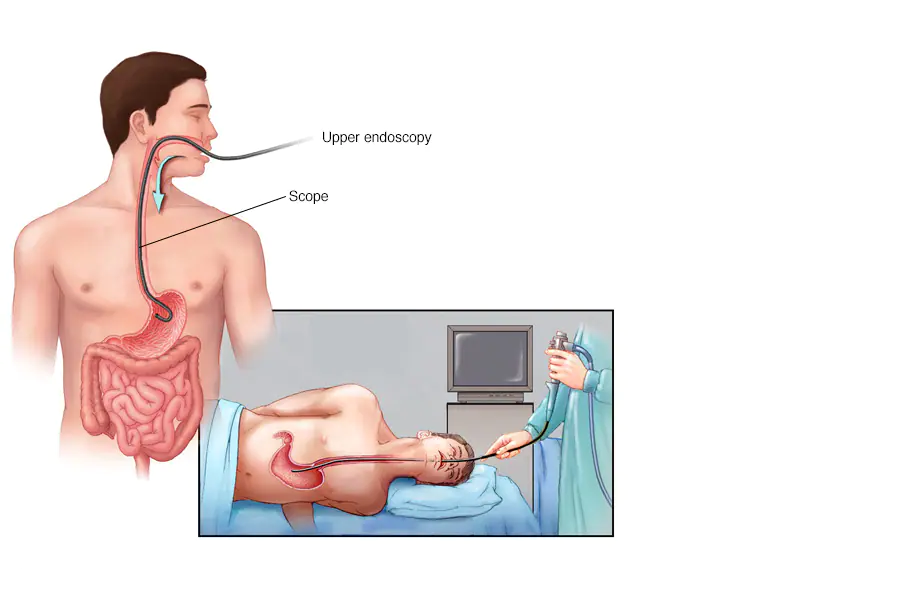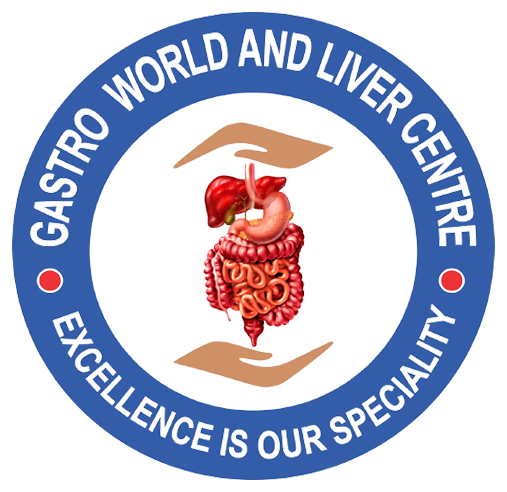Upper GI Endoscopy
Upper GI Endoscopy Centre in Rewa (MP)

What is an upper GI endoscopy?
This procedure is done using a long, flexible tube called an endoscope. The tube has a tiny light and video camera on one end. The tube is put into your mouth and throat. Then it is slowly pushed through your esophagus and stomach, and into your duodenum. Video images from the tube are seen on a monitor.
Small tools may also be inserted into the endoscope. These tools can be used to:
- Take tissue samples for a biopsy
- Remove things such as food that may be stuck in the upper GI tract
- Inject air or fluid
- Stop bleeding
- Do procedures such as endoscopic surgery, laser therapy, or open (dilate) a narrowed area
Why might I need an upper GI endoscopy?
An upper GI endoscopy can be used to diagnose and treat problems in your upper GI tract.
It is often used to find the cause of unexplained symptoms such as:
- Trouble swallowing (dysphagia)
- Unexplained weight loss
- Upper belly pain or chest pain that is not heart-related
- Continuous vomiting for an unknown reason (intractable vomiting)
- Bleeding in the upper GI tract
An upper GI endoscopy can be used to identify disorders or problems such as:
- GERD (gastroesophageal reflux disease)
- Narrowing (strictures) or blockages
- Larger than normal veins in your esophagus (esophageal varices)
- Redness and swelling (inflammation) and sores (ulcers)
- Tumors, either cancerous (malignant) or not cancerous (benign)
- The stomach moving upward, either into or next to your esophagus (hiatal hernia)
- Damage caused by swallowing very harmful (caustic) substances, such as household detergents and chemicals
- Celiac disease
- Crohn’s disease of the upper GI tract
- Infections of the upper GI tract
An upper GI endoscopy can also treat problems in the upper GI tract. The procedure can be used to:
- Control bleeding
- Remove tumors or growths (polyps)
- Open (dilate) narrowed areas
- Remove things that may be stuck
- Perform laser therapy
- Insert a tube used for tube feeding (a percutaneous gastrostomy tube) into the stomach
- Band abnormal veins in your esophagus (esophageal varices)
An endoscope can be used to take tissue samples (biopsies) or GI fluid samples. An upper GI endoscopy may also be done to check your stomach and duodenum after a surgery.
Your healthcare provider may have other reasons to recommend an upper GI endoscopy.
What are the risks of an upper GI endoscopy?
Some possible complications that may occur with an upper GI endoscopy are:
- Infection
- Bleeding
- A tear in the lining (perforation) of the duodenum, esophagus, or stomach
You may have other risks that are unique to you. Be sure to discuss any concerns with your healthcare provider before the procedure.
How can we help you?
Contact us at the Gastro World & Liver Centre Rewa (MP) Or make an appointment online.
